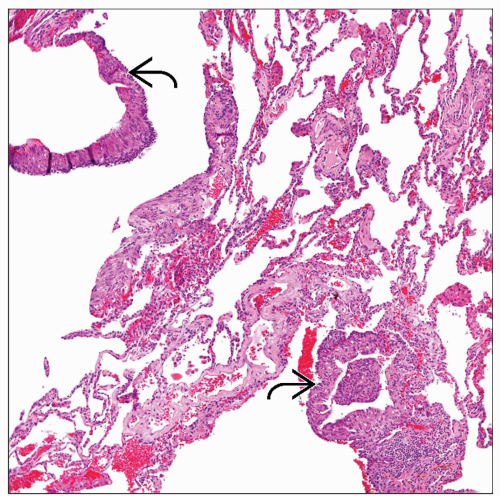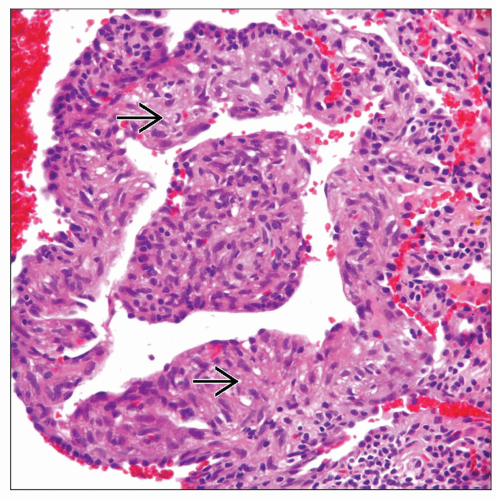Lymphangioleiomyomatosis
Key Facts
Terminology
Lymphangioleiomyomatosis (LAM)
Etiology/Pathogenesis
Unknown etiology
May share similar genetic relationship with tuberous sclerosis complex
Clinical Issues
Incidence
More common in premenopausal women
Rarely described in children
Symptoms
Cough
Shortness of breath
Chylous effusion
Pneumothorax
Hemoptysis
Microscopic Pathology
Cystic changes
Spindle cell proliferation lining cystic structures
Top Differential Diagnoses
Leiomyoma
Usually forms a tumor mass
Unusual for leiomyoma to present with prominent cystic changes
Leiomyosarcoma
LAM lacks atypia or mitotic activity
Tuberous sclerosis
Such distinction may not be possible on histologic grounds alone
It is important to obtain a clinical history
TERMINOLOGY
Abbreviations
Lymphangioleiomyomatosis (LAM)
Synonyms
Lymphangiomyomatosis
Definitions
Nonneoplastic lung condition characterized by presence of immature muscle proliferation
ETIOLOGY/PATHOGENESIS
Etiology
Unknown etiology
May share similar genetic relationship with tuberous sclerosis complex
CLINICAL ISSUES
Epidemiology
Incidence
LAM occurs in approximately 2 cases per million patients
May be underreported
Age
More common in premenopausal women
Rarely described in children
Gender
Commonly affects women
Presentation
Cough
Shortness of breath
Chylous effusion
Pneumothorax
Hemoptysis
Treatment
No specific treatment
Hormonal manipulation
Oophorectomy
Lung transplantation
Prognosis
Predominantly cystic lesions may have poor prognosis
85% survival at 5 years
70% survival at 10 years
IMAGE FINDINGS
General Features
Bilateral multiple nodular and cystic changes in lung parenchyma
Unilateral involvement is also possible
MACROSCOPIC FEATURES
General Features
Multiple cysts with honeycomb appearance
MICROSCOPIC PATHOLOGY
Histologic Features
Cystic changes
Hemorrhage
Spindle cell proliferation
In alveolar walls
Lining cystic structures
With focal clear cell change
Lacking atypia or mitotic activity
Adjacent lung parenchyma may show type II pneumocyte hyperplasia
Predominant Pattern/Injury Type
Cystic
Predominant Cell/Compartment Type
Smooth muscle
DIFFERENTIAL DIAGNOSIS
Leiomyoma
Usually forms a tumor mass
Stay updated, free articles. Join our Telegram channel

Full access? Get Clinical Tree






